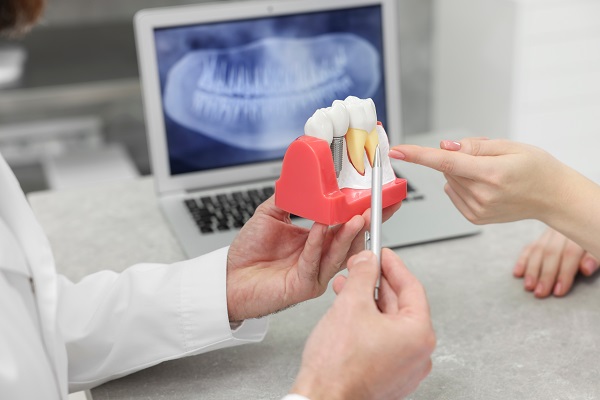What is a Root Canal and Why Would I Need One?

If you have dealt with issues with a tooth, you may begin to explore solutions, including a Root Canal. Also known as endodontic therapy, a root canal procedure is conducted when infection sets into the nerve or pulp of the tooth and causes inflammation. According to the American Dental Association, the infection could be a result of dental decay, a fractured or broken tooth or tooth injury.
All about root canals
What is root canal?
A root canal involves the use of a dental drill to clean away both the infected nerve and pulp from the tooth. The dentist or endodontist can recommend a root canal after evaluating your condition.
Why you may need a root canal
The most common case that signifies the need for the root canal procedure is tooth pain. The amount of pain can vary from mild to severe; it may reduce or intensify throughout the day or worsen only when the tooth is under pressure. Some patients may suffer severe tooth sensitivity when eating hot or cold foods or liquids. The gum surrounding the affected tooth may redden and swell. If you see any of these symptoms, reach out to your dentist immediately. Be sure to mention all the symptoms, as you may need to be taken in for treatment before it worsens. To reduce the pain and swelling, you can place an ice pack on the jaw.
What a root canal procedure entails
When you go for your appointment, the dentist will evaluate your tooth and take x-ray scans to discover the origin of the problem. After a proper screening, the dentist will know enough to suggest the best treatment to alleviate the symptoms or refer you to an endodontist, a specialist in treatments involving the tooth nerves and pulp. Depending on the cause, the dentist may suggest a root canal or another dental procedure to solve the issue.
Endodontic treatment typically takes about one or two dental visits. The dentist will first administer a local anesthetic to numb the area and then place a dental dam on the area to isolate it and prevent contamination during the procedure.
The endodontist will create an opening in the tooth crown to access the pulp of the tooth. Tiny dental instruments will be used to clean the infected pulp from the pulp chamber and roots before shaping the hole for a filling. Once that is complete, the dental expert will fill the root chamber with a biocompatible material called gutta-percha and bond it with adhesive cement.
In most situations, a temporary filling may be used to close the opening; the dentist will remove this before restoring the tooth. After the procedure, you have to return to the dentist for a crown or dental restoration to shield the tooth and restore functionality.
If the tooth does not have enough structure to hold a dental restoration, the dentist may insert a post into the tooth. Talk to your dentist to learn more about the different methods of restoration suitable for your teeth after a root canal procedure.
Request an appointment here: https://www.longgrovedental.com or call Long Grove Dental at (847) 636-5020 for an appointment in our Long Grove office.
Check out what others are saying about our dental services on Yelp: Root Canal Treatment.
Recent Posts
Dentists generally recommend dental implants as a natural choice for replacing missing teeth. If you play sports regularly, especially contact sports, you may be worried about continued participation after having your lost teeth replaced. This article covers what you need to know about playing sports with dental implants.Every sport has required skills, levels of fitness…
Dental phobia is typically classified as a more severe form of dental anxiety. It leads many people to avoid visiting the dentist altogether, and those who do visit the dentist battle through fear and severe anxiety. The good news is that there are effective ways for a general dentist to help patients who struggle with…
Invisalign® is one of the most popular ways to undergo orthodontic treatment. General dentists are recommending teeth straightening via Invisalign® because of the many benefits that come with it. Having an understanding of these benefits may be helpful to those looking at their options. Keep reading to find out more. Below is an explanation of how comfort…
If you have a damaged tooth, perhaps due to trauma or infection, the dentist will work with you to choose the proper smile makeover plan to adjust your smile. The goal is to restore the function of the teeth while making them cosmetically appealing. The treatment strategy will meet your specific needs and achieve the…


